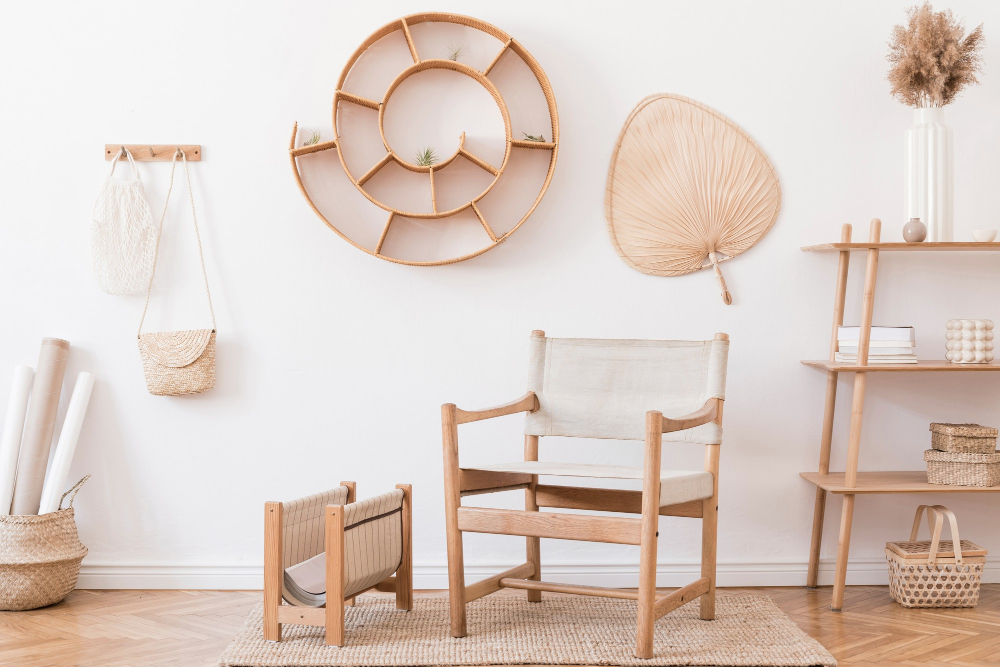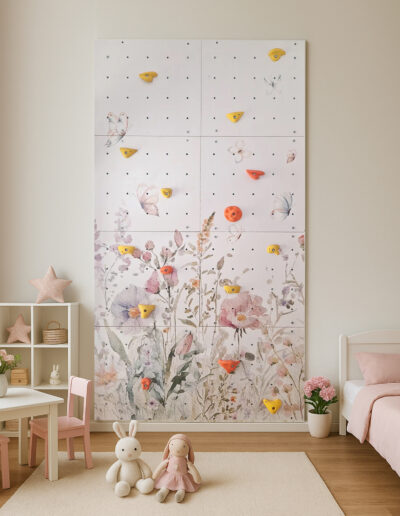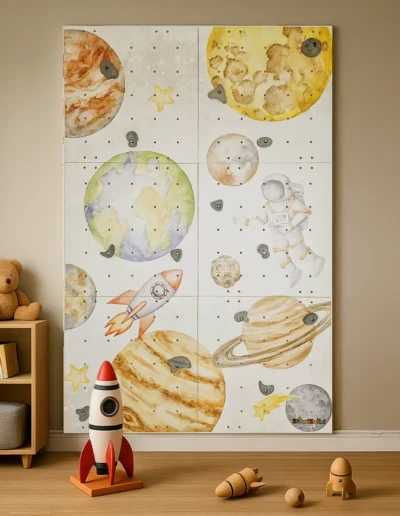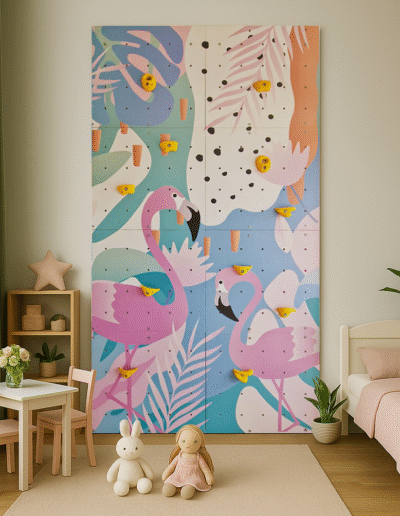A child’s room is more than just a place to sleep and store toys. It’s a space where a toddler spends a significant portion of the day, developing, learning, and discovering the world. Therefore, the way we design this space has a huge impact on their daily functioning. More and more parents are inspired by the Montessori method – an educational approach that emphasizes independence, order, and adapting the environment to the child’s needs. The key is carefully selected furniture – simple, low, made of natural materials that allow easy access to all objects. But how do you get started and what should you pay attention to? In this article, we share practical tips for creating a room that truly supports a child’s development.
Independence begins with the environment
The foundation of the Montessori philosophy is supporting a child’s independence. This isn’t about accelerating growth, but rather empowering the child to make their own decisions in a safe environment. In practice, this means, among other things, providing access to everyday items – clothes, toys, books – without having to ask adults for help. Furniture should be low enough so that the child can reach it independently, and its arrangement in the room should be carefully planned to avoid creating obstacles. This not only develops coordination and motor skills, but above all, strengthens the child’s sense of agency and responsibility for their actions.
Minimalism and order promote concentration
An overabundance of visual stimuli and toys is distracting – even for adults. For a child, it can be overwhelming. Therefore, the Montessori approach emphasizes minimalism and order. It’s better to have fewer toys, but diverse and well-displayed ones. A good practice is to rotate toys every few weeks – this allows the child to have access to only a few selected items, which promotes deeper engagement and longer-lasting concentration. Every item should have its place – ideally on an open shelf or in a basket, so the child can put it away independently. This way, from a very early age, we teach children to organize their space and care for their surroundings.
Functional Space Division
When designing a room according to Montessori principles, it’s worth dividing it into functional zones that meet the child’s daily needs. There should be a play area – with low shelves where the child can freely select and put away toys. Next to this, it’s a good idea to arrange a reading area with a comfortable seat, a soft rug, and books arranged face-first – which increases their appeal to the child. A table with a chair and containers with art supplies will work well in the creative activity area, while a relaxation area will benefit from pillows, a relaxation corner, or a canopy, which will create a cozy place for quiet relaxation.
Safety and Natural Materials
Furniture in a child’s room should be not only functional but above all safe. Avoid sharp edges, unstable structures, and toxic materials. Wood is a good choice, preferably finished with natural oils or water-based varnishes. Pay attention to the sturdiness of the furniture – a child can lean on it, climb on it, or move items from one shelf to another. It’s best to ensure everything is securely attached and stable. It’s also good practice to secure outlets and organize cables so they don’t pose a hazard during everyday play.
What Montessori furniture is worth considering?
While there’s no single “set” of Montessori furniture, several elements appear in every well-designed Montessori room. These include wall shelves placed at a child’s eye level, where toys and books can be arranged in a clear manner. Another good choice are Montessori shelves with an open structure – ideal for storing everyday items while also making it easier for your child to organize them independently. An interesting addition might be shelf for springs, which combines a child’s passion with learning systematicity. You can find all these elements in the Montessori furniture category. 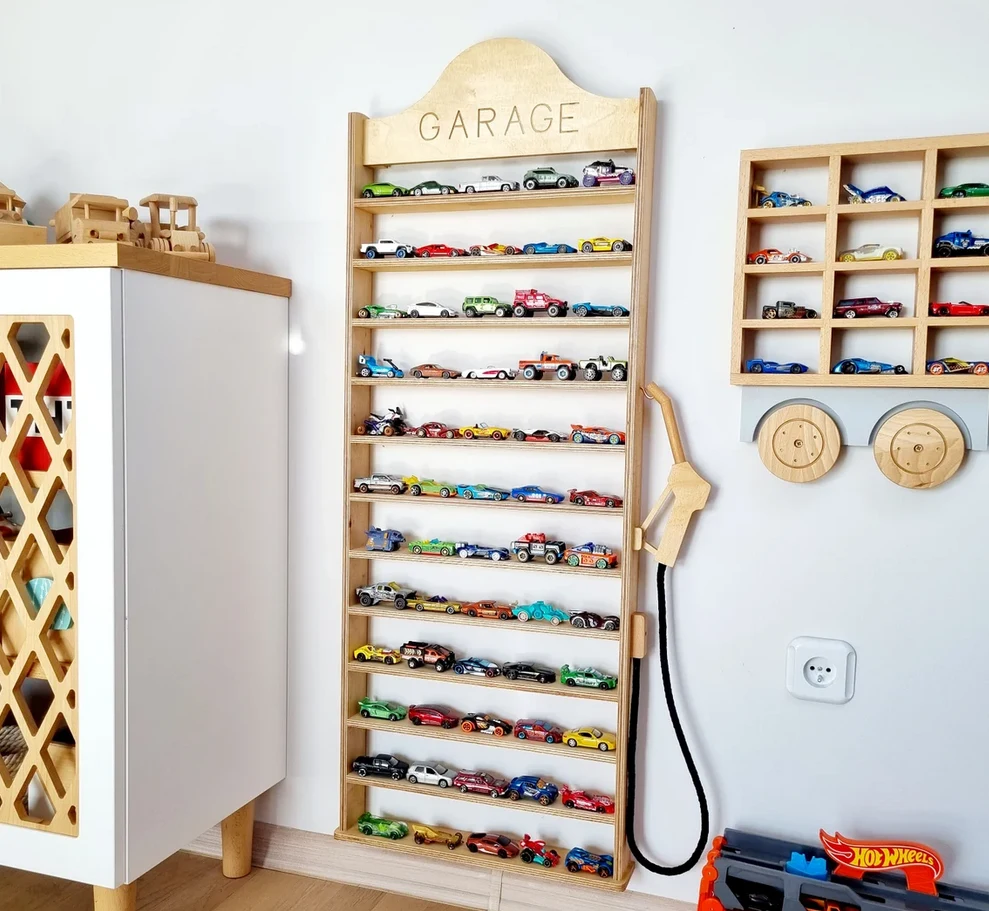
Summary
Creating a child-friendly space is not only a matter of aesthetics, but above all, a tool supporting their development. Montessori furniture helps build independence, teaches order, develops imagination, and gives children real influence over their surroundings.zing. You don’t have to completely remodel your apartment to create a functional, friendly environment. All you need are a few smart solutions, careful observation of your child’s needs, and openness to their pace of development. This makes a child’s room not only a place for play, but also a safe world that your little one can explore and shape in their own way – and that’s the greatest gift we can give them.

